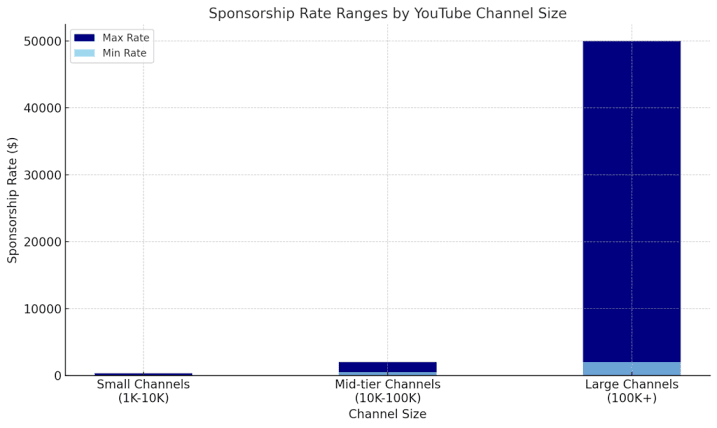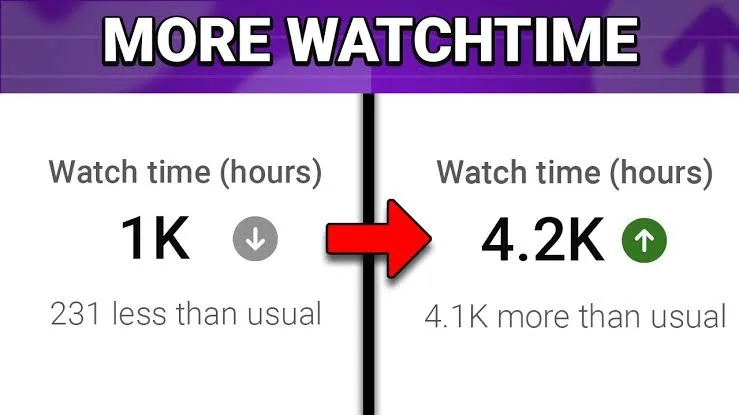Sponsorships have become one of the most lucrative income streams for YouTubers. While ad revenue fluctuates based on views, CPM, and content categories, brand deals offer direct and often more consistent financial rewards. But how much exactly do sponsors pay YouTubers? The answer varies drastically depending on factors like channel size, engagement, niche, and video quality. From micro-influencers making a few hundred dollars per deal to mega YouTubers earning thousands or even millions, the sponsorship world is as vast as it is competitive.
This article breaks down everything you need to know average rates, factors influencing sponsorship pay, different payment models, and how creators can best position themselves to earn more.
How Much Do Sponsors Pay For YouTube?
Sponsorships on YouTube can range from modest amounts to astonishingly high figures, depending on the content creator’s reach and engagement. On average, sponsors pay between $200 to $5,000 per video, with some elite creators commanding up to $50,000 or more for a single collaboration.
Key Influencers on Price:
- Subscriber Count – A larger audience usually equals higher pay.
- Engagement Rates – Videos with high likes, comments, and shares attract premium offers.
- Video Views – More views generally correlate with higher brand visibility and thus, better compensation.
- Niche Saturation – Popular but competitive niches might reduce the rate; less saturated niches may yield higher offers.
Sponsorship isn’t just about how many followers you have. A smaller channel with loyal and responsive followers can sometimes earn more per viewer than a larger, less engaged channel.
How Much Is The YouTube Sponsorship Rate?
Sponsorship rates vary widely, but creators often calculate them based on CPM (Cost Per Mille) or Cost Per Thousand Views. This model allows for standardized pricing across diverse content and channels. YouTube sponsorship rates are not one-size-fits-all. Many creators and brands use a formula to estimate fair rates:
Sponsorship Rate = (Average Views / 1000) x CPM
Typical CPMs (Cost Per Mille or cost per 1,000 impressions) range between $3 and $8, but can go up to $20+ for premium niches. For example, if a creator averages 100,000 views per video with a $10 CPM, the estimated rate would be:
100,000 / 1000 = 100
100 x $10 = $1,000 per video
However, this is only a baseline. Factors like exclusivity, video integration type (shoutout vs. full review), and sponsorship length can dramatically shift this rate. For creators just starting out, a minimum of 1,000 subscribers and consistent content is often needed to attract sponsors.
Sponsorship Rate Ranges By YouTube Channel Size:
This section breaks down how sponsorship rates generally align with subscriber count. YouTubers fall into different tiers, each commanding different pricing brackets.

1. Small Channels (1K – 10K subs):
- Called micro-influencers.
- Typically earn $50 – $300 per video.
- Brands often offer free products instead of cash.
2. Mid-Tier Channels (10K – 100K subs):
- Viewed as rising stars with loyal communities.
- Typically earn $500 – $2,000 per video.
- They may get recurring brand partnerships.
3. Large Channels (100K+ subs):
- Known as macro or mega influencers.
- Typically earn $2,000 – $50,000+ per video.
- Eligible for ambassadorships and exclusive brand lines.
Each of these categories represents a significant marketing opportunity for brands, with compensation reflecting potential impact and reach.
YouTube Sponsorship Payment Models:
Sponsors use various models to pay YouTubers, depending on their marketing goals and budget. These models determine how creators are compensated.
1. Flat Rate Payment Model:
- One-time payment for a fixed deliverable.
- Easy for budgeting and clarity.
2. Commission-Based Model:
- Based on performance or sales conversions.
- Influencer earns 5–30% depending on the product value.
3. CPM Model:
- Paid per 1,000 views.
- Rates can vary from $5 to $75 CPM depending on niche and audience.
4. Cost-Per-View (CPV):
- Lower threshold than CPM.
- Common for small brands targeting specific campaigns.
- Rates range from $0.018 to $0.023 per view.
Each model has its pros and cons. While flat fees offer predictability, commission-based payments reward performance, and CPM is ideal for scalable campaigns.
How Much Do YouTubers Get Paid for Sponsored Videos?
The actual earnings depend on several key performance indicators. Here’s how each of them contributes:
1. Number of YouTube Subscribers:
- High subscriber counts attract more premium brands.
- Milestones like 10K, 100K, and 1M unlock greater sponsorship potential.
2. Video Views:
- Views reflect reach and brand exposure.
- Sponsors often evaluate average views per video instead of subscriber count alone.
3. Watch Time:
- Longer watch times suggest engaging content, making the sponsorship more effective.
- Retention rates of 70%+ are highly attractive to brands.

4. Niche:
- Niches like finance, health, and tech pay more.
- Family or entertainment niches may receive lower rates despite high views.
5. Quality and Type of Sponsored Videos:
- Integration quality matters: A natural brand mention is more valuable than a forced one.
- Tutorials or reviews tend to perform better than static shoutouts.
These factors together determine whether a YouTuber earns a few hundred or tens of thousands per video.
Factors That Affect The Sponsorship Pay On YouTube:
Several underlying elements influence sponsorship earnings beyond views or subscribers:
- Relevance: Alignment of video content with brand message boosts rates.
- Video Production Quality: Professional editing, clear audio, and visuals build brand trust.
- Consistency: Regular uploads improve engagement and sponsor confidence.
- Demographics: Age, gender, and location of your audience affect sponsorship appeal.
- Past Performance: Metrics from earlier campaigns (CTR, conversions) can help negotiate better deals.
- YouTube Compliance: Strikes or demonetization can reduce sponsorship interest drastically.
By optimizing these elements, YouTubers can consistently increase their sponsorship rates over time.
Finding the Right YouTuber for Your Sponsorship Deals:
For brands, choosing the right creator ensures a higher return on investment. Here’s how to identify the right partner:
- Audience Fit: Analyze whether the YouTuber’s audience aligns with your target customer.
- Engagement Metrics: Look at likes, comments, and shares—not just views.
- Authenticity: Choose creators who genuinely enjoy and use your product.
- Content Relevance: Ensure the YouTuber’s content fits your product category.
- Past Collaborations: Check previous sponsored videos for quality and delivery style.
- Budget Match: Micro-influencers might offer better ROI for niche or local campaigns.
Brands that conduct deep research and foster real partnerships tend to see the best outcomes in influencer marketing.
Pricing YouTube Sponsorship Packages:
YouTubers must strategically price their sponsorship deals to balance value and scalability.
Here’s how to do it effectively?
- Know Your Worth – Analyze your average views, engagement rate, and niche CPM.
- Create Tiered Packages – Offer Basic, Standard, and Premium packages with different deliverables.
- Use a Media Kit – Highlight your channel stats, audience demographics, and past successes.
- Benchmark Competitors – Look at other creators in your space and adjust your prices accordingly.
- Offer Custom Deals – Personalize offers for recurring collaborations or exclusive promotions.
- Stay Open to Negotiation – Be flexible to accommodate a variety of brand budgets without undervaluing your influence.
Thoughtful pricing reflects professionalism and increases your chances of securing long-term, profitable sponsorships.
Conclusion:
Sponsorships are a major income source for YouTubers, but how much they earn depends on multiple variables: channel size, content quality, niche, and more. From small creators earning a few hundred dollars to YouTube giants commanding tens of thousands per video, there is no universal rate.
However, understanding CPM, engagement metrics, and payment models helps both creators and brands strike fair and profitable deals. With transparency, strategic planning, and relationship-building, sponsorships can become a consistent and rewarding revenue stream.
FAQs:
Yes, most brands offer upfront payments, especially for flat-rate deals, though performance-based models may pay after campaign completion.
There’s no fixed requirement, but 1,000 subscribers with strong engagement is often the starting point for most sponsorships.
Tech, finance, and health-related content usually command the highest rates due to higher CPM and consumer trust.
Yes, micro-influencers with high engagement can often secure better deals per view than some large channels.
Views and engagement metrics matter more than just subscriber count, as they reflect actual reach and influence
